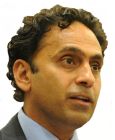Self-Help
Going Beyond Resolutions: Brain Tips to Increase Success
Recognizing slips and reacting immediately are the keys to resolution wins.
Posted December 28, 2023 Reviewed by Monica Vilhauer Ph.D.
Key points
- Don't just resolve to change. Use your brain to prepare to make the change last.
- Think about all the barriers that prevent you from changing, and come up with a plan to address each one.
- When you recognize a slip, react immediately.

Around this time every year, millions of people make New Year’s resolutions. The usual suspects relate to eating, exercise, and mindfulness. Especially after a gluttonous holiday season perhaps sequestered indoors due to weather or illness, wanting to eat better and be more active are natural inclinations. Gyms get filled. Less alcohol is purchased. January goes well for most, but more often than not, we slowly slide back to the very habits we resolved to change.
Let me share some ways you can use your brain to prevent relapsing this year. First, I'll detail some reasons we fail, and then point out ways to do better.
Some Problems With Resolutions
Part of the reason resolutions often fail is that we decide on a one-time fix without planning for the long term. Changing eating behaviors is a great example. Research highlights the disturbing finding that no diet is empirically better than others for long-term weight loss. Yes, some (e.g., Weight Watchers, the Mediterranean diet) show some short-term effectiveness, but few long-term studies show any success for any one plan. The problem is that people make eating changes that are so fixed (e.g., no more pizza) that they think focusing on those is enough and ignore what else has to change. If you just avoid pizza but eat other unhealthy foods or do not change your physical activity, you are not doing yourself a favor and are just fostering a negative attitude toward food. Solve this by resolving to keep changing. Instead of changing in January after the start of the New Year, resolve to keep changing every week, every month, fine-tuning your strategies and evaluating your progress, while revising your plan as needed. Here's how to do it:
Develop a mechanism for change. Sometimes we resolve to eat better or exercise more, but then do not make explicit the steps needed to change. To remedy this, make sure you keep a list of what you want to change visible around you and if you slip, try to identify what tempted you off course so you can watch for it next time. If you have a day when you do not exercise or eat well, make a note of it. Find a way to keep track of what you want to change, and that will be in your face to nudge you to change. Until you make the change, have that nagging nudge be visible to goad you on. Change is rarely easy. Too often we may have an ideal of what we would like to do or be without thinking of the ways to get there. When we visualize the end product or goal without the steps needed to get there or the hurdles we need to deal with, we are less likely to succeed.
Assess your readiness for change. One of the biggest reasons that resolutions fail is that people are not ready for the change. Early research on smoking cessation, and then a host of other health behaviors, has identified that there are clear-cut stages that we all go through when we are trying to change a behavior (Prochaska & DiClemente’s transtheoretical model of change). We move from pre-contemplation, when we do not even know that a change is needed, to contemplation, when we consider making a change but are not sure whether or when we will do it. Change is more likely when we make small steps toward change and consider how the changes will lead to better outcomes: the preparation stage. The action stage is when change happens and we intend to keep going. The research is clear: Change succeeds only when people actively move themselves from contemplation to action. Know where you are, and actively push yourself forward to the next stage to make change more likely.
If you are making a resolution, you have identified something you want to change. There is certainly a science to changing behavior, and yes, intending to change is a great and important early step. But it is not always the first thing to do. Simply making a resolution without additional mental work only sets you up for failure. You have to be ready to change, you need to invest time and energy to change, and you have to be in the right stage.
So far, so good. Now let’s hone in some more:
Don’t just resolve. When you resolve to change, it is easy to feel like the battle is already half won. Much as making a to-do list reduces some of your cognitive load, resolving to do something feels good. Yes, I will not eat as much meat. Yes, I will stretch more. Yes, I will spend less time on my phone. Here is something different: For each element of your life that you want to change, try to recognize why you don’t do it already.
Recognize barriers and contexts. Any negative behavior happens in a context. The lack of positive behavior also has reasons. An important step in behavior change is reflecting on why the behavior you want to change is currently not happening. Is it just because you do not have time? This is a common explanation: You may need more time to cook healthier food. You may need more time to take a walk every day. There is another problem, too: The issue may be that you do not know how to do it. It is easy for me, a health psychologist, to suggest less screen time, more physical activity, and well-balanced meals, but do we know how to do it?
You may even resolve to get better in each area, but what if you have never received training in how to do it? Going beyond resolutions, then, is recognizing why you do not do it already, and then devising a way to make the time or gain the knowledge you need. By allocating time to recognize key barriers to change, you can add the all-important step of devising sub-strategies to make each step of the process more likely to occur.
If you are someone who wants to eat better, recognize when and why you are not doing it. Perhaps you have not considered what good eating is. Maybe you do not have recipes for good eating handy. Maybe you do not have the materials needed. Spend time on why you are not doing something. This form of reflection may help you recognize issues you have not noticed before and make it easier for you to change.
React. Once you recognize the contextual issues surrounding your problems with changing or even underlying your resolve in the first place, here is another key bit of advice: Do not wait to change. Do it right away.

Let's look at one of the biggest issues out there. Most people I interact with, students and colleagues, bemoan their inability to free themselves from their phones. In class, I see students' fingers scrolling through reels, the thumbs performing that up-down-back sweep. If you feel that your phone is taking up more and more of your mind space, you may recognize that you use it to procrastinate and avoid doing an onerous task, or that those reels on cooking hacks give you way too much satisfaction. You may sit there and insist, "Next year I resolve to use this phone less."
That's not good enough. The moment you recognize the thought, react. Stop scrolling right then. Put your phone down and walk away. Immediately do something totally different—even if it’s getting a drink of water. By reacting, you are helping your mind shift gears. The key is action. Resolving is great, but acting and reacting the moment you have the thought is even better. Catch yourself starting to do what you have resolved not to and react immediately.
We all get stuck in ruts. We often fall back into them even when climbing out. Resolving to change is a super first step, but to make your changes more likely to stick, try these simple steps and practice them over and over. At first, you may have trouble succeeding but stay the course and the resistance and discomfort will subside as you stride toward a new you.
References
Prochaska, J. O., & DiClemente, C. C. (1983). Stages and processes of self-change of smoking: Toward an integrative model of change. Journal of Consulting and Clinical Psychology, 51(3), 390–395. https://doi.org/10.1037/0022-006X.51.3.390




